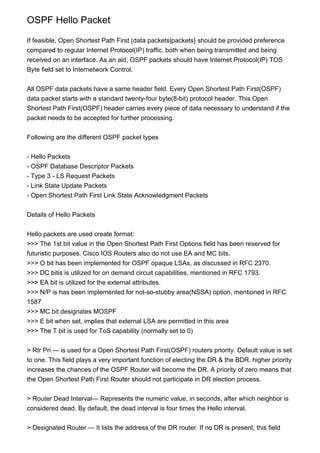Report
Share
Download to read offline

Recommended
Recommended
More Related Content
Featured
Featured (20)
How Race, Age and Gender Shape Attitudes Towards Mental Health

How Race, Age and Gender Shape Attitudes Towards Mental Health
AI Trends in Creative Operations 2024 by Artwork Flow.pdf

AI Trends in Creative Operations 2024 by Artwork Flow.pdf
Content Methodology: A Best Practices Report (Webinar)

Content Methodology: A Best Practices Report (Webinar)
How to Prepare For a Successful Job Search for 2024

How to Prepare For a Successful Job Search for 2024
Social Media Marketing Trends 2024 // The Global Indie Insights

Social Media Marketing Trends 2024 // The Global Indie Insights
Trends In Paid Search: Navigating The Digital Landscape In 2024

Trends In Paid Search: Navigating The Digital Landscape In 2024
5 Public speaking tips from TED - Visualized summary

5 Public speaking tips from TED - Visualized summary
Google's Just Not That Into You: Understanding Core Updates & Search Intent

Google's Just Not That Into You: Understanding Core Updates & Search Intent
The six step guide to practical project management

The six step guide to practical project management
Beginners Guide to TikTok for Search - Rachel Pearson - We are Tilt __ Bright...

Beginners Guide to TikTok for Search - Rachel Pearson - We are Tilt __ Bright...
Unlocking the Power of ChatGPT and AI in Testing - A Real-World Look, present...

Unlocking the Power of ChatGPT and AI in Testing - A Real-World Look, present...
OSPF Hello Packet Details
- 1. OSPF Hello Packet If feasible, Open Shortest Path First (data packets|packets} should be provided preference compared to regular Internet Protocol(IP) traffic, both when being transmitted and being received on an interface. As an aid, OSPF packets should have Internet Protocol(IP) TOS Byte field set to Internetwork Control. All OSPF data packets have a same header field. Every Open Shortest Path First(OSPF) data packet starts with a standard twenty-four byte(8-bit) protocol header. This Open Shortest Path First(OSPF) header carries every piece of data necessary to understand if the packet needs to be accepted for further processing. Following are the different OSPF packet types - Hello Packets - OSPF Database Descriptor Packets - Type 3 - LS Request Packets - Link State Update Packets - Open Shortest Path First Link State Acknowledgment Packets Details of Hello Packets Hello packets are used create format: >>> The 1st bit value in the Open Shortest Path First Options field has been reserved for futuristic purposes. Cisco IOS Routers also do not use EA and MC bits. >>> O bit has been implemented for OSPF opaque LSAs, as discussed in RFC 2370. >>> DC bitis is utilized for on demand circuit capabilities, mentioned in RFC 1793. >>> EA bit is utilized for the external attributes. >>> N/P is has been implemented for not-so-stubby area(NSSA) option, mentioned in RFC 1587 >>> MC bit designates MOSPF >>> E bit when set, implies that external LSA are permitted in this area >>> The T bit is used for ToS capability (normally set to 0) > Rtr Pri — is used for a Open Shortest Path First(OSPF) routers priority. Default value is set to one. This field plays a very important function of electing the DR & the BDR. higher priority increases the chances of the OSPF Router will become the DR. A priority of zero means that the Open Shortest Path First Router should not participate in DR election process. > Router Dead Interval— Represents the numeric value, in seconds, after which neighbor is considered dead. By default, the dead interval is four times the Hello interval. > Designated Router — It lists the address of the DR router. If no DR is present, this field
- 2. carries a value of 0.0.0.0. The DR is selected through the Hello protocol. Open Shortest Path First Router with the highest priority becomes the Designated Router. If the priorities clash, the router with the biggest RID becomes the DR. The core idea of the DR is to reduce the number of flooding on multiaccess media types. The Designated Router uses multicasting to reduce the total amount of flooded traffic. All Open Shortest Path First Routers flood their Link state DB to the Designated Router, and the DR then passes that information back to other routers on that media. No DRs/BDRs exist on point-to-point or point-to-multipoint segments. > Backup Designated Router(BDR) — This field identifies the BackUp Designated Router & carries the IP of the BackUp Designated Router. If no BackUp Designated Router exists, this field has a value of 0.0.0.0. The BackUp Designated Router is also elected through the Hello protocol. The need of the BackUp Designated Router is to act as the backup of the DR, for a smoother transition in case the Designated Router dies. OSPF Hello Packet Details, OSPF Hello Packet, OSPF Hello Packet